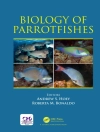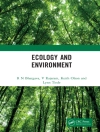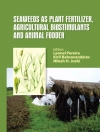This book presents a series of perspectives showing the current knowledge about human evolution. On the occasion of the 150th anniversary of Darwin’s book, The Descent of Man, and Selection in Relation to Sex, in which he explicitly addresses the natural origin of the human species, this collective work reviews current and diverse aspects of human evolution: from psychology, linguistics, genomics, paleontology, artistic expression or sexual selection. It also offers a historical, social and ideological context of what is often considered to be Darwin’s second great work after The Origin of Species.
Although current research is concentrated largely on fossils and genomes, this book also deals with the main points Darwin centered his attention on; comparative morphology and psychology, and sexual selection. It also covers other new aspects, such as the origin of art, social structure and social learning.
With contributions from leading experts in their respective fields, the book guides readers to the study of the social context of Darwin and his time, and the state of the art of studies on human evolution and sexual selection, considering all aspects that Darwin examined, including those that emerged later and now are important disciplines in our understanding of our own evolution.
The English translation of parts of this book from its Spanish original manuscript was done with the help of artificial intelligence (machine translation by the service Deep L.com). A subsequent human revision was done primarily in terms of content.
Tabella dei contenuti
Chapter 1.- Light would be thrown: human evolution one hundred and fifty years after Darwin.- Chapter 2. The historical background to Darwin’s Descent of Man.- Chapter 3.Ways of seeing the world: Darwin and the first Victorian generation.- Chapter 4. The problem of design in the Darwinian proposal: A historical overview.- Chapter 5. Darwin under suspicion: The representation of Darwinism in the newspaper ABC (1909-1982).- Chapter 6.The Descent of Man: Darwin and psychology.- Chapter 7.Human evolution. The linguistic evidence.- Chapter 8.Human evolution in Eurasia: The fossils that Darwin did not know.- Chapter 9. Human evolution: The genomic evidence.- Chapter 10.The adaptations that made us human: Morphology.- Chapter 11.The adaptations that have made us human: The genome.- Chapter 12. How do we humans evolve?.- Chapter 13. Art as a human element.- Chapter 14.Sexual selection: Following Darwin’s legacy.- Chapter 15. Genetic and cultural evolution of mate choice.- Chapter 16.How past shapes future: The biological future of humankind.
Circa l’autore
Jaume Bertranpetit
Professor of Evolutionary Biology, Pompeu Fabra University (UPF), Barcelona
Founder Member of the Institut of Evolutionary Biology (UPF-CSIC)
Juli Peretó
Professor of Biochemistry and Molecular Biology, Department of Biochemistry and Molecular Biology, University of València
Member of Biotechnology and Synthetic Biology research group, I2Sys Bio (UVEG-CSIC)
Founder co-director I2Sys Bio (2016-2020)












